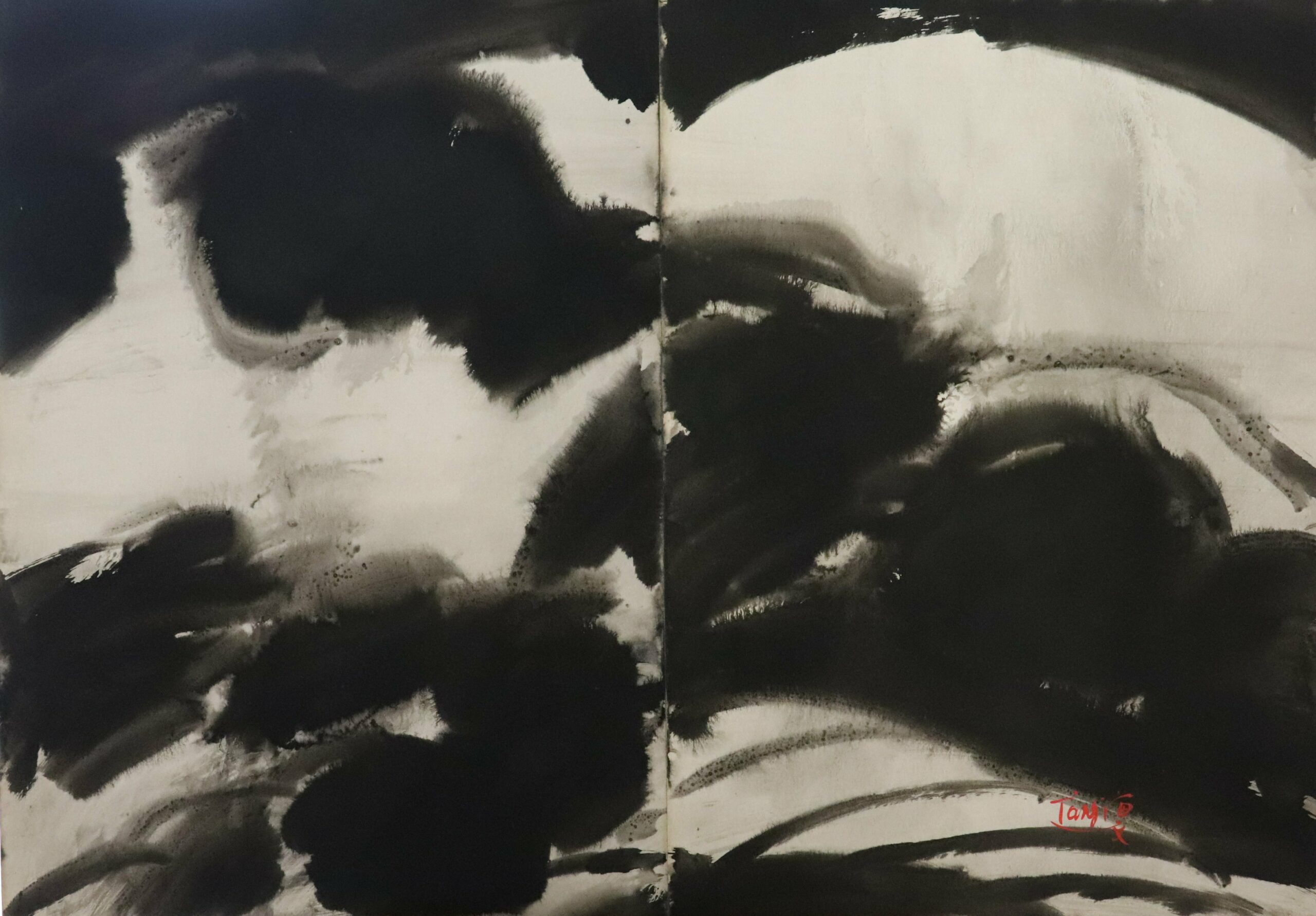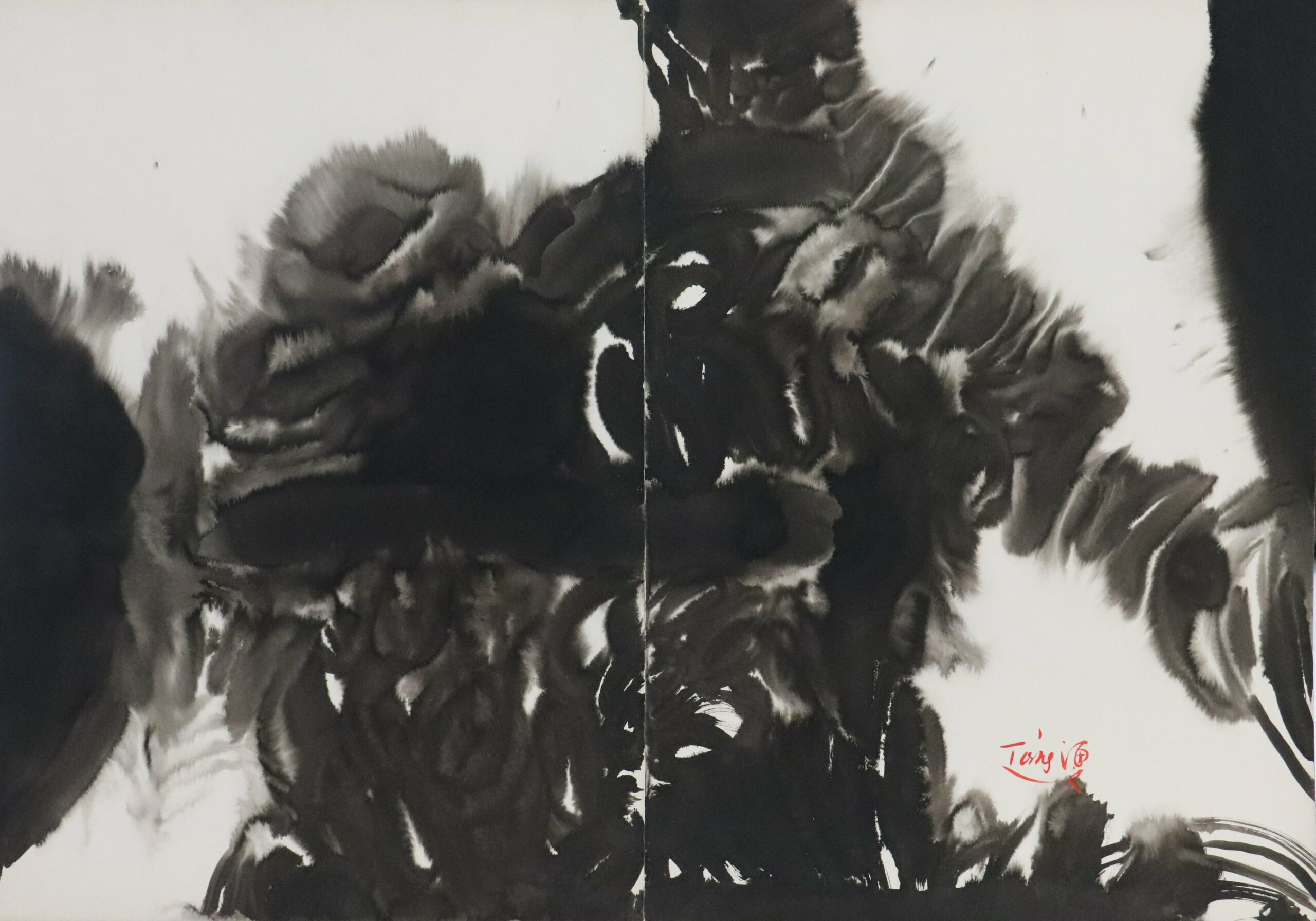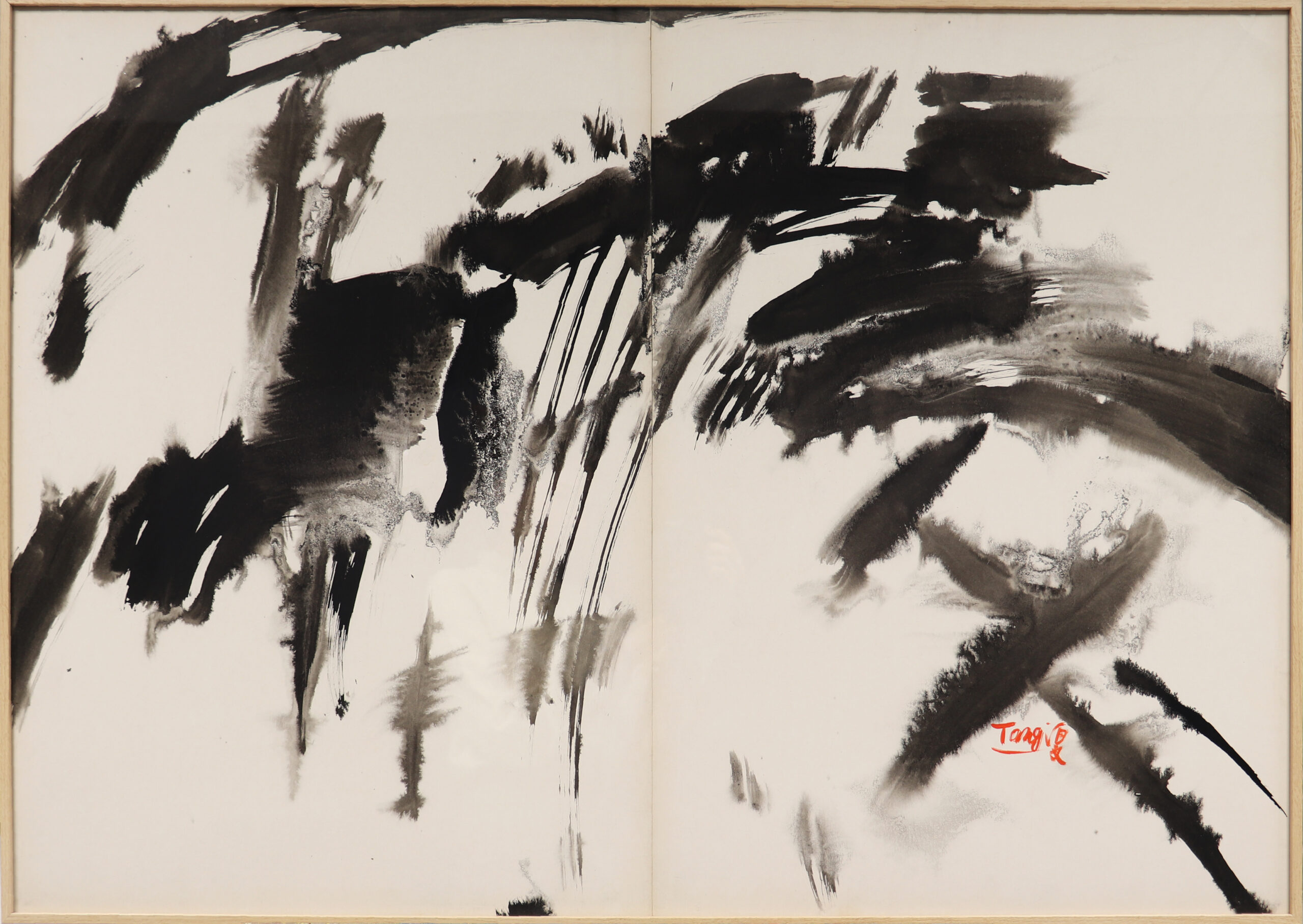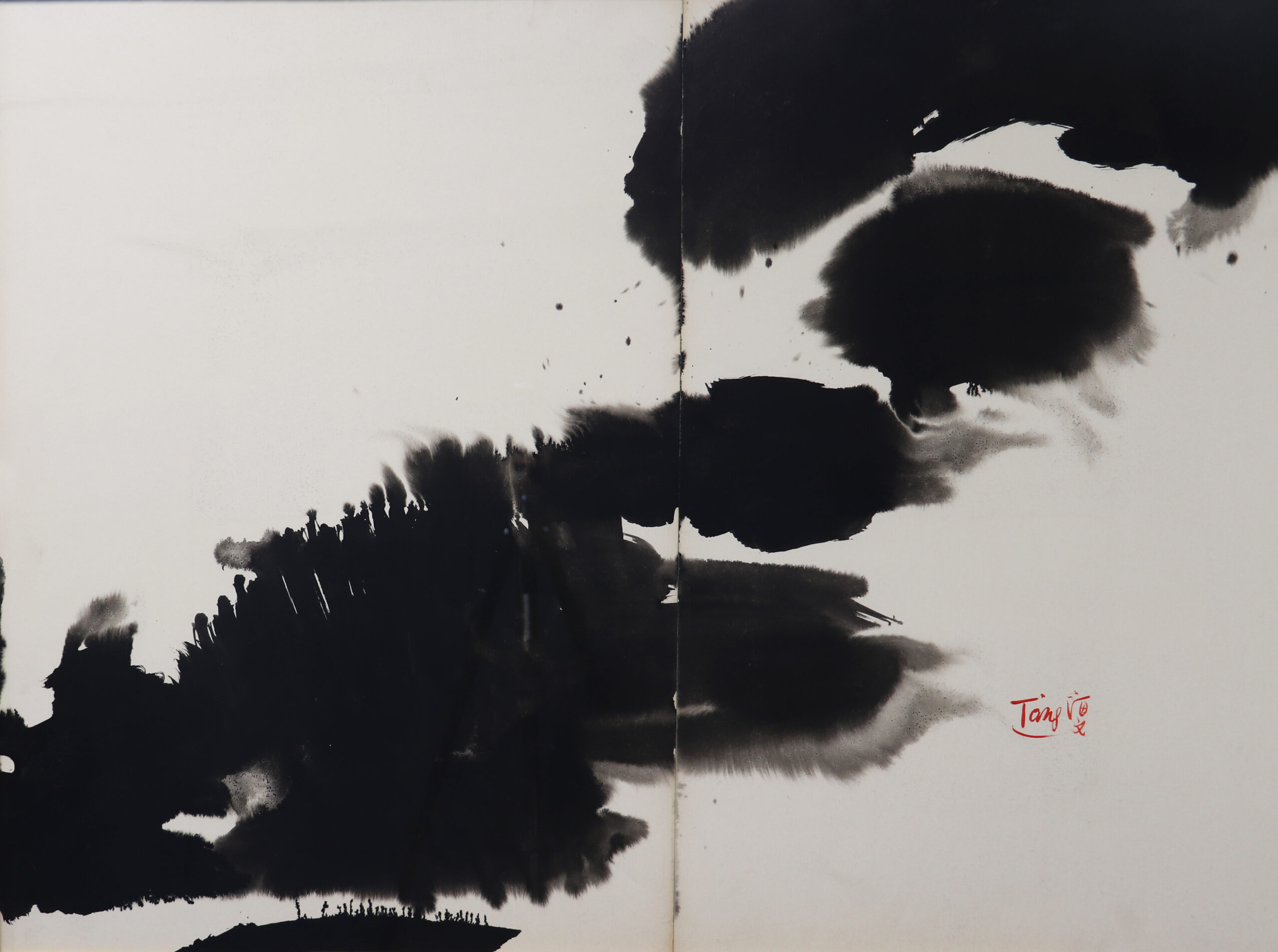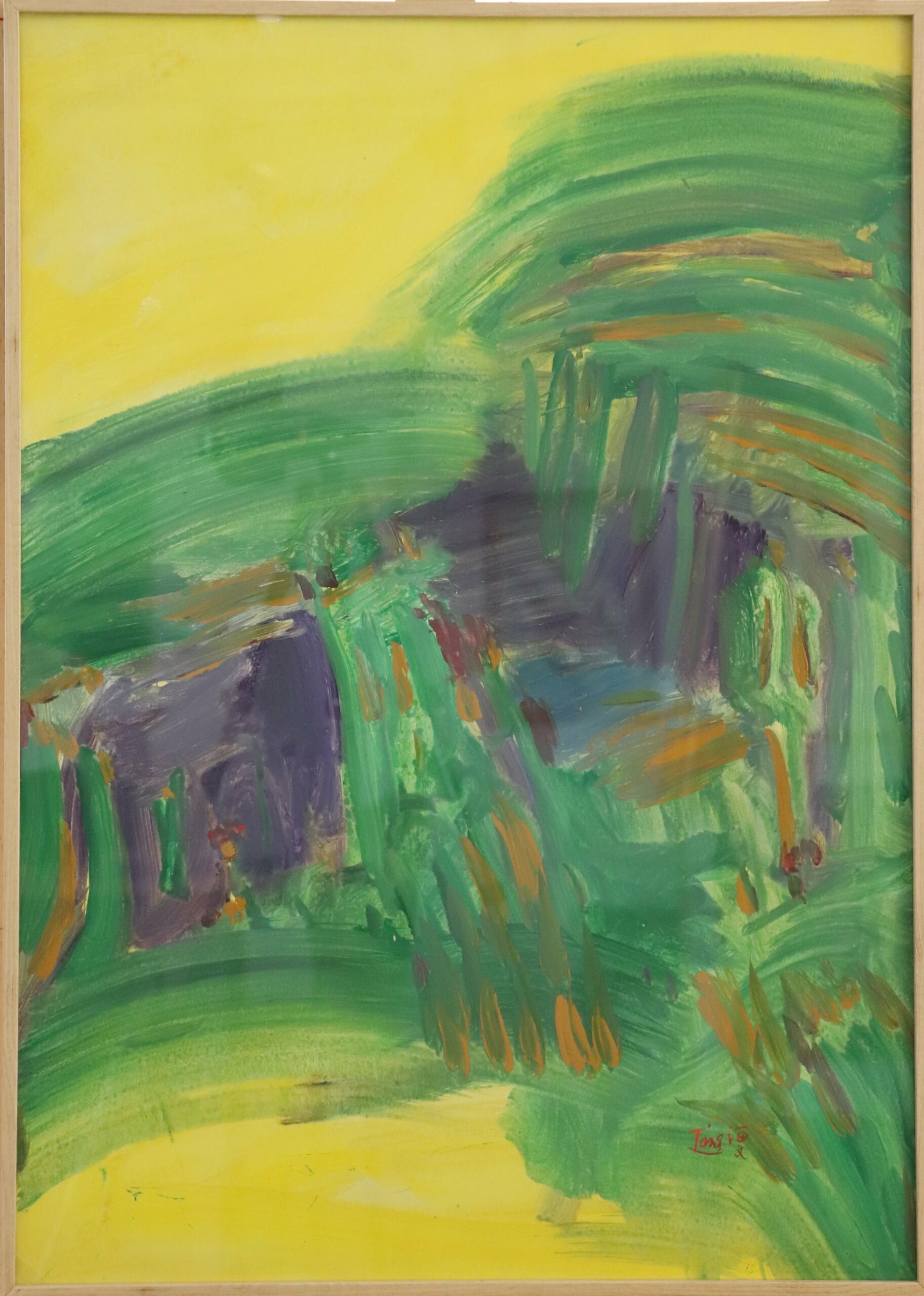T’ang Haywen
A 20th century Chinese painter, born in Xiamen, Fujian Province in 1927. He learnt calligraphy from his grandfather at an early age and moved to Vietnam in 1937. Because of his dedication to art, he travelled to the art capital of Paris in 1948. He visited all the major art museums in Paris and learnt the techniques of painting by self-study. T’ang Haywen initially painted figurative works, portraits and some landscapes in oil or acrylic. In the mid-1960s, he gradually turned to ink, producing numerous ink drawings in diptychs and triptychs.
T’ang Haywen’s work, which emerged from obscurity at his death, is revered for the fusion it achieved between Chinese aesthetic and spiritual principles and Western forms of abstract expressionism. However, in his early years, T’ang Haywen, like many other Chinese painters, refused to use the word abstract to describe his paintings, declaring in 1972 that « our deep sensibility, which is linked to the unconscious, can only develop and grow when it is nourished by the tangible, that is to say, as far as painting is concerned, by recalling to our conscious memory our deep and abiding experience of sensitivity in the real world ».
T’ang Haywen’s first exhibition was held in 1955. Subsequently, his works were exhibited in various countries around the world. in August 1997, the Taipei Fine Arts Museum organised a retrospective exhibition of his solo works. in 1991, he died in Paris after a long illness. in 2002, the Musée des Beaux-Arts de l’Asia in Paris, France, organised a major retrospective exhibition of his works. In the same year, the Shiseido Foundation in Tokyo, Japan, also held a solo exhibition of T’ang Haywen’s paintings, presenting a complete picture of his style. Most of T’ang Haywen’s works are in the collections of major museums in Paris, such as the Musée d’Art Moderne de Paris, the Musée de la Senechal and other famous museums.
As an artist who stayed in France in the 1950s, T’ang Haywen belongs to the same period as Chu Teh-Chun and Zao Wou-Ki, who can represent Chinese art in the international arena. In addition, the influence of Taoism on T’ang Haywen is very profound, making his painting style and concept give a new presentation to the European art world. His works fetched a record 2.3 million RMB in 2015 alone (excluding commission). The market’s increased attention to post-war abstraction over the past few years has also brought T’ang Haywen to a wider audience. With the establishment of his foundation, his market has also been regulated, resulting in an increase in prices year on year.
Acheter une oeuvre de T’ang Haywen
Vous êtes collectionneur et souhaitez acheter une oeuvre de T’ang Haywen ou investir dans l’art contemporain ?

